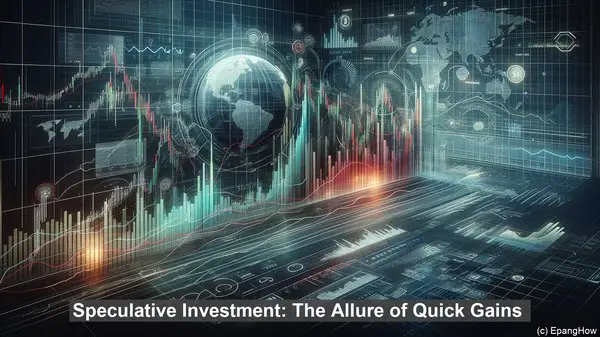Introduction: The Essence of Investment
Hello, and welcome to our discussion on the contrasting realms of productive and speculative investments. At its core, investment entails deploying capital in various assets or ventures with the expectation of future gains. However, the way these investments function and the risks they entail can vary greatly.
Productive Investment: Fostering Growth and Returns
Productive investments, as the name suggests, are aimed at generating tangible output or value. They involve allocating funds towards assets or projects that have the potential to yield consistent returns over time. Examples of productive investments include funding a startup, expanding a manufacturing facility, or purchasing real estate with the intention of generating rental income. The key characteristic of productive investments is their focus on long-term value creation rather than short-term gains.

The Benefits and Risks of Productive Investments
One of the primary advantages of productive investments is their potential for steady, reliable returns. By investing in assets that have inherent value or in projects that can generate revenue, individuals or organizations can create a sustainable income stream. Additionally, productive investments often contribute to job creation, technological advancements, and overall economic growth. However, they are not without risks. Market fluctuations, regulatory changes, or shifts in consumer preferences can impact the profitability of such investments, necessitating careful analysis and risk mitigation strategies.

Speculative Investment: The Allure of Quick Gains
Speculative investments, on the other hand, are characterized by their focus on short-term profits. They involve allocating funds towards assets or ventures that are subject to significant price volatility or uncertainty. Examples of speculative investments include day trading in the stock market, investing in cryptocurrencies, or participating in initial coin offerings (ICOs). The appeal of speculative investments lies in the potential for rapid appreciation and substantial gains in a relatively short span. However, this allure is accompanied by heightened risks.
The Risks and Rewards of Speculative Investments
Speculative investments are inherently more volatile and unpredictable compared to their productive counterparts. While they can yield substantial profits, they can also lead to significant losses. The speculative nature of these investments often stems from factors such as market sentiment, news events, or even social media trends. As a result, the value of such assets can fluctuate rapidly, making them a high-risk proposition. Additionally, the lack of underlying value or revenue generation potential in some speculative investments further amplifies the risk.
The Macro Impact: Productive vs Speculative Investments
The composition of an economy’s investment landscape can have far-reaching consequences. A healthy balance between productive and speculative investments is often considered ideal. Productive investments, by fostering growth, job creation, and innovation, contribute to the overall well-being of an economy. They can also have multiplier effects, stimulating demand in related sectors. Speculative investments, while potentially lucrative for individuals, can introduce volatility and systemic risks. The 2008 financial crisis, for instance, was partly attributed to the excessive speculation in the housing market. Regulators and policymakers often strive to strike a balance, ensuring adequate oversight and risk management in the financial system.
